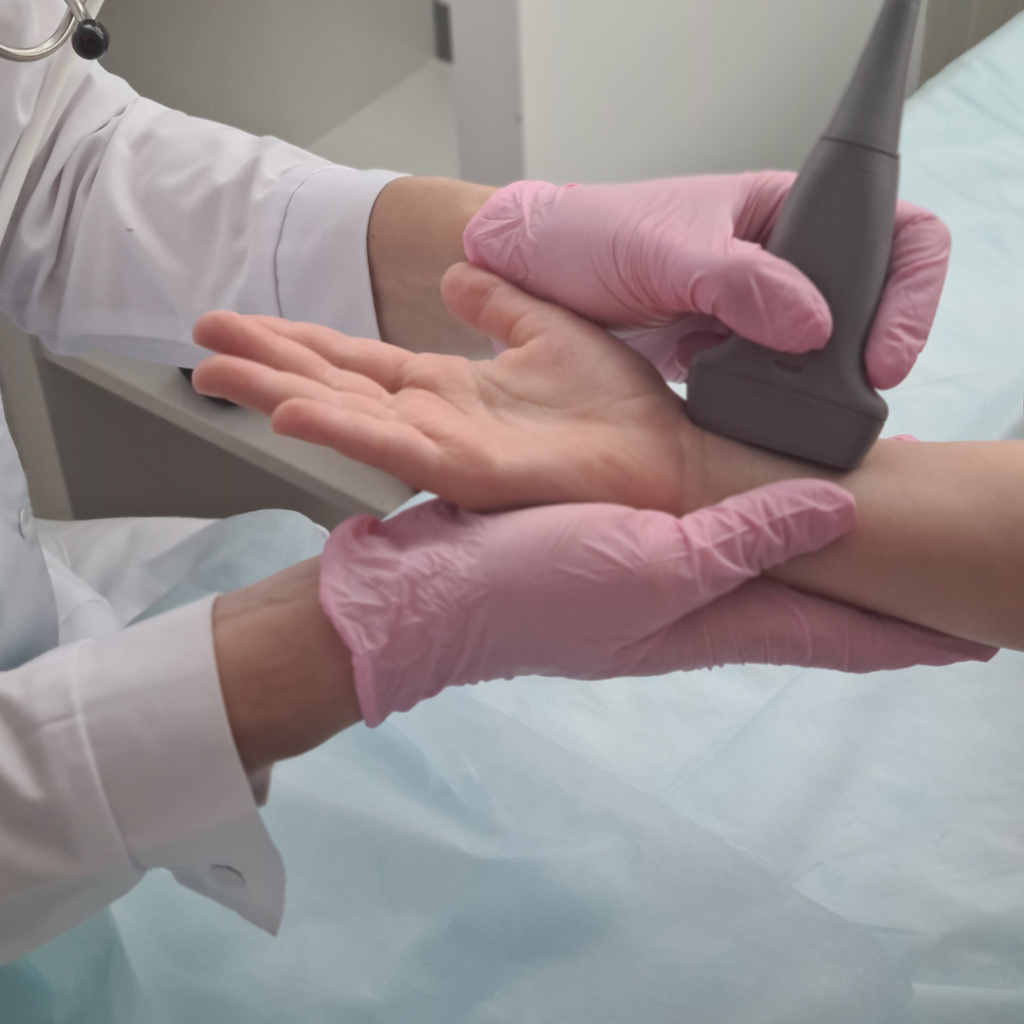Carpal tunnel syndrome (CTS) is a common and often debilitating condition characterized by numbness, tingling, and weakness in the hand and wrist. For individuals suffering from severe or persistent symptoms, surgical intervention may be necessary to relieve pressure on the median nerve and restore function. Traditionally, carpal tunnel release (CTR) surgery has been performed using open or endoscopic techniques, which carry inherent risks and limitations. However, a recent study titled “Long-Term Clinical Results of Carpal Tunnel Release Using Ultrasound Guidance: A Multicenter Pragmatic Study” sheds light on a groundbreaking approach that could revolutionize the future of carpal tunnel surgery. By utilizing ultrasound guidance, this minimally invasive technique offers the potential for improved outcomes, reduced complications, and enhanced patient satisfaction.
The Study: A Game-Changer for Carpal Tunnel Surgery
The study in question represents a significant advancement in the field of carpal tunnel surgery, offering compelling evidence for the efficacy and safety of ultrasound-guided CTR. Unlike traditional techniques that rely on anatomical landmarks or endoscopic visualization, ultrasound guidance provides real-time imaging of the carpal tunnel anatomy, allowing for precise localization of the median nerve and surrounding structures.
Key Findings:
- Improved Accuracy: By visualizing the internal structures of the wrist in real-time, ultrasound guidance enables surgeons to precisely locate and release the transverse carpal ligament, the primary source of compression in carpal tunnel syndrome. This enhanced accuracy reduces the risk of inadvertent nerve injury and ensures optimal decompression of the median nerve.
- Minimally Invasive: Ultrasound-guided CTR is performed through a small incision, typically less than one-half centimeter in length, minimizing tissue trauma and reducing the risk of postoperative pain and scarring. This minimally invasive approach promotes faster recovery times and allows patients to return to normal activities sooner than with traditional open surgery.
- Long-Term Efficacy: The results of the multicenter study demonstrate favorable long-term clinical outcomes following ultrasound-guided CTR, with a significant reduction in symptom severity and improvement in hand function sustained over time. This evidence underscores the durability and effectiveness of the technique as a treatment for carpal tunnel syndrome.

Implications for Clinical Practice:
The implications of this study are profound and far-reaching, signaling a paradigm shift in the approach to carpal tunnel surgery. By leveraging the advantages of ultrasound guidance, clinicians can offer patients a less invasive and safer alternative to traditional CTR techniques. The potential benefits of ultrasound-guided release extend beyond improved outcomes for individual patients to encompass broader implications for healthcare systems and society as a whole.
- Enhanced Patient Experience: Ultrasound-guided CTR offers patients a less traumatic surgical experience, with reduced pain, faster recovery, and improved cosmetic outcomes. This patient-centered approach enhances satisfaction and compliance with treatment recommendations, ultimately leading to better overall outcomes.
- Cost-Effectiveness: Minimally invasive techniques such as ultrasound-guided CTR have the potential to reduce healthcare costs associated with prolonged hospital stays, postoperative complications, and rehabilitation. By optimizing resource utilization and minimizing the economic burden of carpal tunnel surgery, ultrasound guidance can contribute to the sustainability of healthcare systems worldwide.
- Future Directions: The success of ultrasound-guided CTR opens the door to further innovations in minimally invasive surgery, with implications for other anatomical regions and medical specialties. As technology continues to advance, we can expect to see continued refinement and adoption of ultrasound-guided techniques across a wide range of surgical procedures, driving improvements in patient outcomes and safety.
The study on long-term clinical results of carpal tunnel release using ultrasound guidance represents a significant milestone in the field of hand surgery, offering compelling evidence for the efficacy, safety, and long-term durability of this innovative technique. By harnessing the power of ultrasound imaging, clinicians can perform carpal tunnel surgery with unprecedented precision and minimally invasiveness, revolutionizing the future of hand surgery and improving outcomes for patients worldwide. As ultrasound-guided techniques continue to evolve and gain widespread acceptance, we can look forward to a future where carpal tunnel surgery is safer, more effective, and less burdensome for patients, paving the way for enhanced quality of life and functional restoration.
- Aguila, D., Kirsch, M., Kindle, B., & Paterson, P. (2024). Long-term clinical results of carpal tunnel release using ultrasound guidance: A multicenter pragmatic study. Journal of Hand Surgery Global Online, 6(1), 79–84. https://doi.org/10.1016/j.jhsg.2023.10.001



